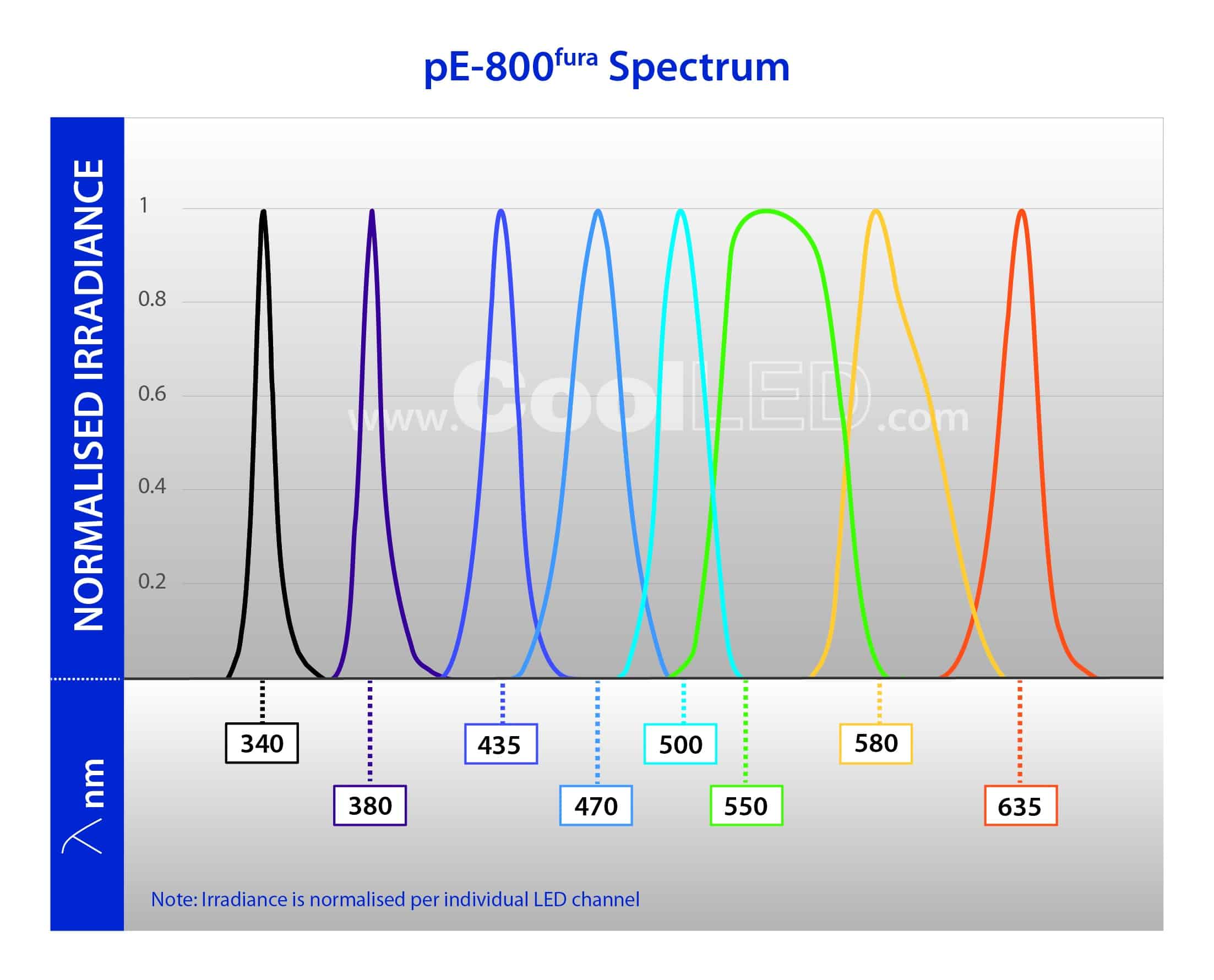Multi-Tasking with Multi-Channel LED Illumination
Sponsored by CoolLED, on 17 April 2024
A widefield microscope can be utilised for far more than simple fluorescence experiments. By carefully choosing peripheral components including the light source, the system can open up an array of additional applications, from FRET to optogenetic stimulation and calcium imaging.
LEDs are the go-to method for microscope illumination, offering many benefits in terms of performance, convenience, cost and sustainability. When considering LED illumination, it is important to understand the number of individually controllable channels, as well as switching speeds between these channels.

The most obvious benefit to a multi-channel illumination system is the larger range of fluorophores and calcium indicators that can be excited with a higher signal-to-noise ratio. This range is broader than often thought, since individual LEDs have wider spectra compared to lasers, allowing coverage of fluorophores outside the centre wavelength. For example, a bright LED centred on 450 nm can be ideal for exciting GFP. It is also important to note that these wider spectra also require the use of excitation ‘clean-up’ filters to optimise fluorophore excitation.

The speed of switching between individual LED channels is just as important, maximising temporal resolution for live samples, increasing accuracy of ratiometric measurements, and speeding up experiments utilising image tiling or multi-position z-stacks. Not to mention, the ability of TTL synchronisation between the light source and camera minimises phototoxicity and photobleaching, increasing the accuracy of live cell data, and extending time-lapse studies.
The CoolLED pE-800 is ideal for performing a range of applications on a single widefield microscope, since it includes eight individually controllable channels. Moreover, TTL triggering achieves LED switching speeds of <7 µs. As long as optical filters are chosen carefully, the pE-800 can be ideal for applications including:
- Live cell multi-colour imaging
- FRET
- Spectroscopic imaging of chromogens
- Ratiometric fluorescence
- High-content imaging
- Spatial biology
- FISH
- pH monitoring
- Calcium imaging (ratiometric and single indicators)
- Optogenetic stimulation
- Spinning disk confocal
About the CoolLED pE-800
The LEDs of the pE-800 provide broad spectral coverage from 365-740 nm (Figure 1). A wide range of control options are available, including TTL and analogue control, as well as RS-232 and USB with support in several imaging software platforms.


Figure 1: CoolLED 8-channel pE-800 LED Illumination System and spectrum.
Interested in Fura-2?
Adding Fura-2 imaging capabilities to the lab or microscope facility is also possible with the pE-800fura which is identical to the pE-800 in every way except the LED spectrum, which instead includes 340 nm and 380 nm LEDs (Figure 2).


Published Research
For more detail, browse a few research papers which have utilised the pE-800:
Optogenetics explores how emergency ‘Bio-SatNav’ works in mice
The future of biomarker analysis: spatial biology in cancer diagnostics
CFP-YFP FRET in researching voltage-gated membrane receptor activity
For even more specialised applications, the pE-800 Series can be customised for OEM requirements. Versatile, simple to use and backed by CoolLED’s world-renowned support and a generous warranty, the pE-800 Series makes next generation LED illumination accessible to all.
More information
Visit the CoolLED website: www.coolled.com/products/pe-800-series
If you have further questions, please get in touch: info@coolled.com



 (No Ratings Yet)
(No Ratings Yet)